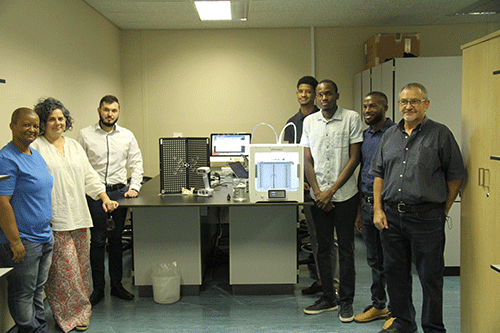Attempts to strengthen the education of health professionals in Southern Africa has yielded the first fruit in Namibia, after the first 3D printed anatomical models were created at Unam’s Hage Geingob Campus in Windhoek.
The project is made possible with the generous support of the European Union’s Erasmus+ project and funding from the Dirisana+ grant. Unam is part of a large partnership, which consists of Welwitchia Health Training Centre, WITS University, Sefako Makgatho University and the University of Pretoria along with European partners University of Turku, Maastricht University and University College Dublin.
The collaboration aims to use 3D printing technology to support health education through printing of educational models and contributing to research projects. The broader objective of this project is to back staff development, collaboration on teaching, learning and assessment practices; creation of recommendations for integrated blended learning, and research.
The current scarcity of human tissue for student dissection and research, compounded by Covid-19 and the deficiencies within the Anatomical Donations and Post-Mortem Examinations Ordinance 12 of 1977, meant that other resources for student learning had to be sourced.
Lecturer for Human, Biological and Translational Medical Sciences, Dr Adéle du Plessis, explained that the project has been in motion since 2019 when the application was made and eventually granted in late 2020 and took off in 2021.
“The aim is to start small and ensure that we have enough competent staff who can use this technology, thereafter, explore more options other than improved teaching,” remarked Du Plessis. Though not the first department to use 3D printed technology, the Dirisana+ project is the first to do so, specifically to improve the training of health students in using 3D printed anatomical models.
In January this year, training of various technicians from partnering institutions took place at the Hage Geingob Campus with different models being successfully printed. The trainees were from Welwitchia Health Training Centre and Unam. The training was conducted by Hendrik Swarts from BuildVolume, a 3D printing company. According to Swarts, the technicians were trained to use a 3D printing technology known as fused deposition modelling (FDM).
Unam is excited to embark on this new endeavour.


